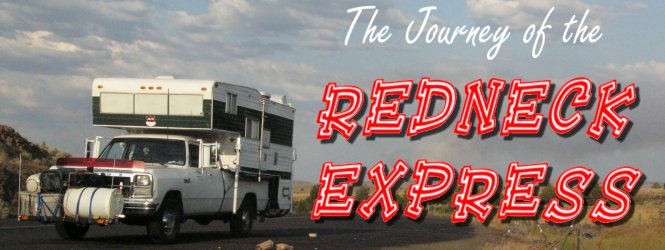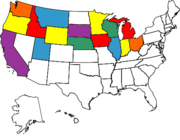(NOTE: All pictures are clickable for enlarging)
Since brakes aren't cheap, and I wanted to replace just about the whole mess, it got post-poned several months.
Needless to say, I'm very glad I DIDN'T take my winter trip this year. Here's why:
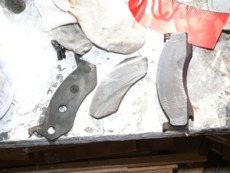
That's not THREE brake pads, that's two. The inner pad had SHEARED off of its backer plate. When we pulled the caliper off, the pad fell into two pieces on the ground. Kinda solved the mystery of the brake noise, didn't it?
The original Caliper's on the Dana 44 front axle used a Phenolic Piston to perform the braking action. For those that don't know what a Phenolic piston is, its plastic.
The replacement Calipers (Remanufactured Mopars) are now all Steel Caliper Pistons, the same thing as the One ton front brakes.
REPLACEMENT
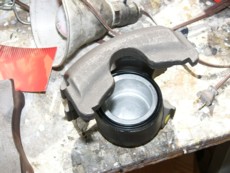
ORIGINAL
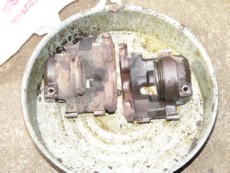
Another key thing that said it was time to replace the calipers was the piston boots basically disintegrated at a fingers touch, like a piece of ash made from a burned piece of paper.
The one problem we ran into is that the Rotors are not easy to remove. We wound up having to skip turning them as Chrysler decided that 1992 was the year to use a really screwy retaining bolt to hold the hubs on the front axle (Which the rotors are pressed onto the BACKS of).
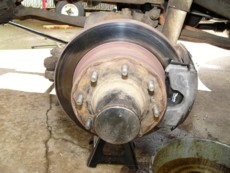
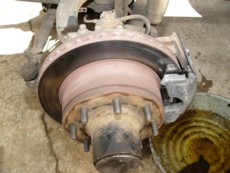
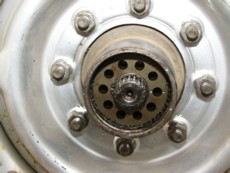
According to my brother, Les Schwab has some method of turning the rotors while they're still mounted on the vehicle. I have no clue how that would work, but the rotors were in good shape when we removed the calipers and inspected them, at least to the naked eye. The driver's side was very mildly warped, but not enough to be noticeable under most normal brake operation.
A more detailed inspection later with a proper measuring tool was more accurate and revealed that the rotors were well past the bare minimum thickness recommended for use.
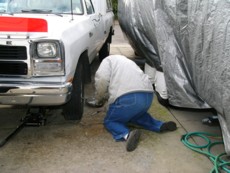
Yours truly hard at work wishing he had an impact wrench and a good torque wrench.
